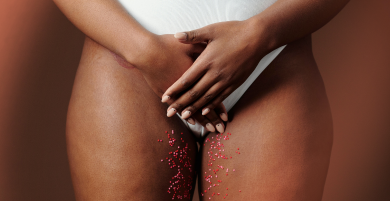What Is A Yeast Infection?
A vaginal yeast infection is a common condition among women, caused by an overgrowth of yeast, typically Candida albicans, in the vagina. This infection leads to symptoms such as itching, irritation, and abnormal discharge. While it is not usually serious, it can be quite uncomfortable.
Causes Of Yeast Infections
Yeast infections are common and can be bothersome, but understanding their causes is the first step toward effective treatment and prevention. Here are the primary factors contributing to yeast infections:
-
Imbalance in Vaginal Microbiome
The vagina's delicate balance of bacteria and yeast can be disrupted by factors like antibiotic use or hormonal changes, leading to yeast overgrowth.
-
Weakened Immune System
A weakened immune system, caused by illness or stress, can make it harder for the body to control yeast levels, increasing the risk of infection.
-
Hormonal Changes Fluctuations in hormones during pregnancy, menstruation, or menopause can create conditions favourable for yeast overgrowth.
-
Antibiotics Antibiotics can disturb the natural balance of microorganisms in the body, killing beneficial bacteria and allowing yeast to multiply.
-
Uncontrolled Diabetes Poorly managed diabetes can result in high levels of sugar in bodily fluids, providing an environment where yeast can thrive.
Common Symptoms Of Yeast Infections
Yeast infections can be uncomfortable and bothersome, but recognizing their symptoms can help you seek timely treatment. Here are some frequent indications to look out for:
-
Itching and Irritation
You might feel itchy and irritated down there, which can be quite uncomfortable. -
Abnormal Discharge
You may notice a thick, white, odourless discharge that looks like cottage cheese. -
Redness and Swelling
The skin around your vagina might turn red, swollen, and puffy. -
Burning Sensation
Some women feel a burning sensation, especially when they pee or have sex. -
Soreness and Pain
Yeast infections can make you feel sore and achy in your lady parts, making it uncomfortable to move around.
Treatment Options
Treating a yeast infection typically involves antifungal medications. Here are some common options:
-
Over-the-counter Antifungal Creams
Apply directly to soothe itching and discomfort. -
Oral Antifungal Medications
Prescription pills, like fluconazole, for severe or recurrent cases. -
Vaginal Suppositories or Tablets
Insert into the vagina to release medication for treatment.
Lifestyle Changes To Prevent Yeast Infections
Making simple lifestyle adjustments can significantly reduce the risk of yeast infections. Here are some practical changes you can implement to prevent these uncomfortable infections:
-
Stay Clean
Keep the vaginal area dry and clean, and skip harsh soaps. -
Choose the Right Clothes
Wear cotton underwear and loose clothes to keep things airy. -
Skip Scents
Say no to scented products like pads or tampons that can upset your balance. -
Be Safe
Use condoms during sex to protect against infections. -
Cut Back on Sugar
Yeast loves sugar, so limit sweets to keep it in check. -
Relax
Stress weakens your immune system, so find ways to unwind. -
Drink Up
Stay hydrated with plenty of water to reduce vaginal infection.
Natural Remedies To Cure Yeast Infections
Looking for natural ways to treat yeast infections? Here are some simple remedies that may help ease the symptoms and promote healing. Here are some natural remedies to cure yeast infections:
-
Greek Yogurt
Probiotics in yoghurt, particularly Lactobacillus acidophilus, help maintain vaginal health and reduce yeast overgrowth. -
Boric Acid
Boric acid suppositories are powerful antiseptics that can treat resistant yeast infections but must be used with caution due to potential toxicity. -
Oil of Oregano
Oregano oil extract has antimicrobial properties that can help control Candida growth, but it should be applied externally and never ingested. -
Probiotic Suppositories and Supplements
Probiotics can restore the balance of bacteria and yeast in the body, benefiting both digestive and vaginal health. -
Coconut Oil
Coconut oil has antifungal properties effective against Candida albicans and can be applied directly to the affected area. -
Tea Tree Oil
This essential oil has antifungal properties and can help treat yeast infections when diluted and used externally. -
Apple Cider Vinegar
Adding apple cider vinegar to a bath can help eliminate harmful microorganisms, but it should not be used for douching. -
Garlic
Adding garlic to your diet may help kill Candida, though inserting it vaginally is not recommended due to potential irritation. -
Hydrogen Peroxide
An antiseptic that can kill yeast and bacteria when diluted and used topically, but not suitable for internal use. -
Vitamin C
Boosting your immune system with vitamin C can help your body fight off yeast infections naturally. -
Vitamin E
Vitamin E suppositories or oil can soothe itching, burning, and inflammation caused by yeast infections and atrophic vaginitis.
Yeast infections can be uncomfortable, but you can manage them effectively. Understanding the reasons, symptoms, and treatment choices will help you find relief. Simple lifestyle changes and natural therapies can also assist. If symptoms persist, see a doctor for personalised advice. With these tips, you can say goodbye to yeast infections and feel more comfortable.









































